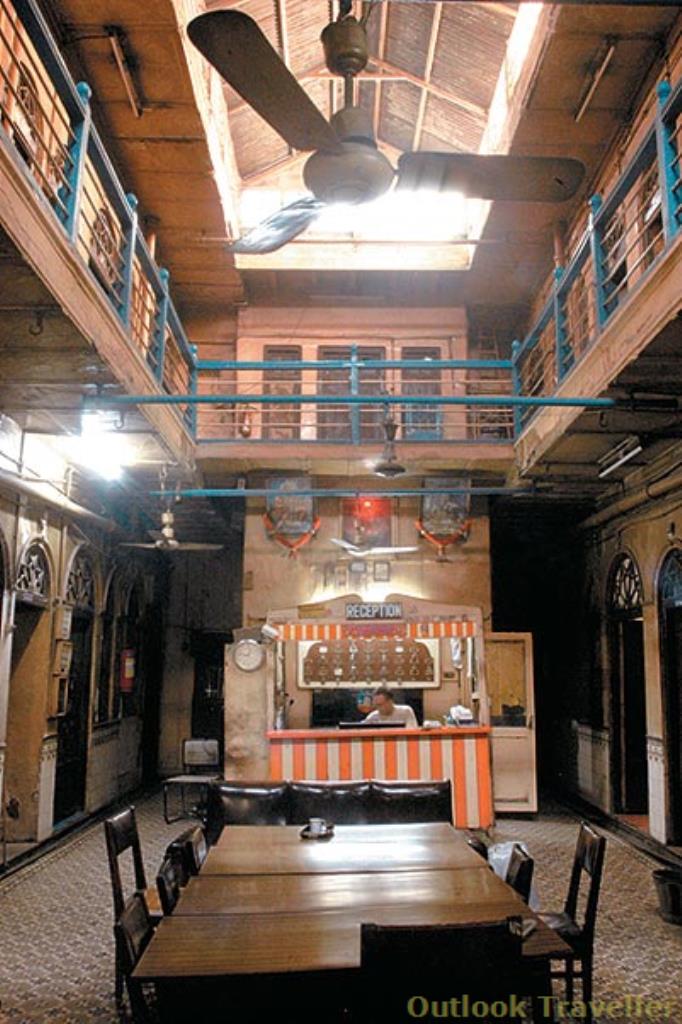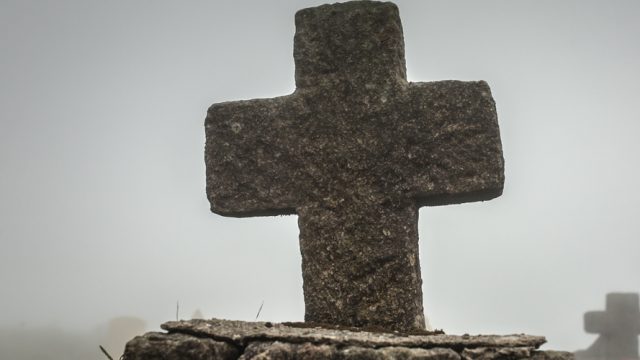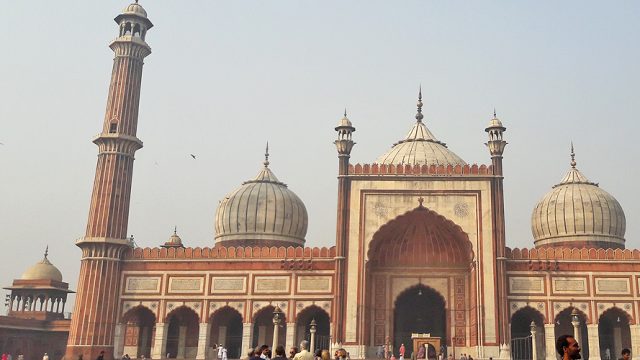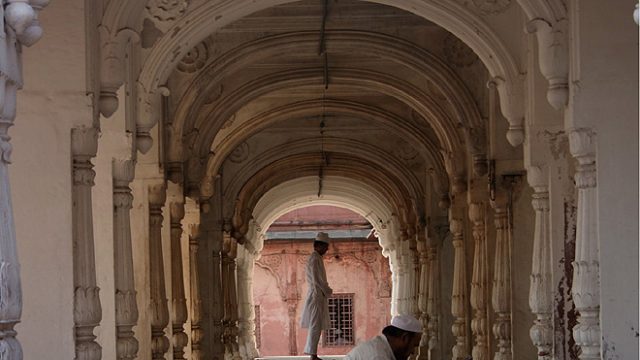Trying to gather up information about Shahjahanabad, Delhi’s oldest, eternally decaying quarter, can be daunting
Delicately sidestepping the question, I scramble past through the mini-door-within-a-door beneath a grand gateway, bordered by ornately wrought floral motifs. I nearly stumble over a prostrate gent in underpants, sleeping on a step. Front and centre, inside the courtyard within, is a public urinal, from which two grinning youths greet me. The space is filled with trash and makeshift constructions set up by the textile traders.
A friendly squatter escorts me along to four metal pillars made in London, which he declares to be the predominant feature of this courtyard. The dharam-shala was once owned by the famous Lala Chunnamal, a brocade merchant and Delhi’s wealthiest inhabitant in his day. Ten generations later, the property is under dispute, and this squatter, who grew up there, is unsure of its (and his) fate. “Yesterday this was a dharamshala, today it’s a shop, who knows what will happen tomorrow?”
That’s a sentiment that echoes from establishments all along Church Mission Road, home to wholesale ghee and wheat markets, sarais and quaint haveli-turned-hotels. Yesterday’s glorious parks are today’s parking; yesterday’s ancient havelis are today’s wholesale markets; and Shahjahanabad’s sweeping waterways and trees have been replaced with bustling traffic, around which wafts (according to a recent report) the most noxious air in all of India.
With the advent of Old Delhi railway station in 1867, Church Mission Road became Delhi’s first ‘modern’ road — running all the way through to Fatehpuri Masjid (incidentally, also owned — albeit briefly — by Lala Chunnamal). The quarter was once inhabited by noblemen attached to the Mughal court, and Anglican missionaries who founded the St Stephens’ Church, where natives were regaled with sermons in Urdu.
This is where Ravi Kukreja, one of the proprietors of the Hotel Regal, was born about 70 years ago. “My father was with the Congress, and had built this hotel around 1936. Around then, there were practically no hotels here, only inns and sarais. He had another hotel, the Maharaja Hotel, which he built in 1911 for the maharajas who attended the coronation of Queen Victoria. But it went to my uncle, and his sons sold it when he died. Now, only Hotel Regal retains its original character.”
The character is, like many of the quarter’s haveli-turned-hotels, decidedly quaint. Large, brightly painted wooden doors welcome you up a wide stairwell; its walls lined with tiles printed with flowers or Mt Fujis. The rooms are musty, and smell of insalubrious odours ranging from dank ammonia to nicotine. Regal falls on the nicotine side of the spectrum, as the swankiest of these hotels, with room rates ranging from Rs 500 to 1,100.
Taj Mahal Hotel around the corner, alas, is decidedly ammoniac. It makes up for it, however, with its Lynchian-level quirky cuteness/disquieting draw. Quirky cuteness: signs, now stern, now solicitous — ‘No Drink’. ‘No Smoking’. ‘Toilet’. ‘Stair’. Disquieting draw: spittoons in the corners of the stairway, used by paan-chewing patrons with poor aim. Quirky cuteness: the staff — Parvinder, with his incongruous line-backer frame; a candy-striped reception booth, manned by a little old Sikh gent. Disquieting draw: the aforementioned rooms.
This quirky/disquieting balance is perfectly cinematic, so it isn’t surprising to hear this year’s blockbuster (H)indie hit film Dev D was shot here, and its art director has added some of their own studiously retro touches, such as an old school hand-painted ad depicting a pasty lady unhooking her bra on the wall beside the terrace, with the legend: ‘Hot look. Cool feel.’ This hasn’t done much to draw more custom; just the occasional curious passerby. “The owner is a wine trader, which is 100% profit. In this business, we just about break even.” says the manager, Manish Sharma,
Deepak Sharma, proprietor of Hotel Gautam a little away, sees darker threats. His establishment was a snooker parlour once frequented by “Presidents and Rajas”, owned by a “Mohammedan” who fled to Pakistan during Partition, turning his hotel into ‘evacuee property’. Today, he feels like his fate is no less uncertain, as do the area’s 50 other hotel proprietors. “I wanted to renovate but according to the Master Plan Delhi 2021 this ‘is a special area’, where heritage properties will be acquired and ‘redeveloped’,” says Sharma. “We’re also opposing a flyover project. If they continue to make schemes to fit the road, not the place, it’ll ruin the place.”
Shahjahanabad
Leave a Reply
You must be logged in to post a comment.





